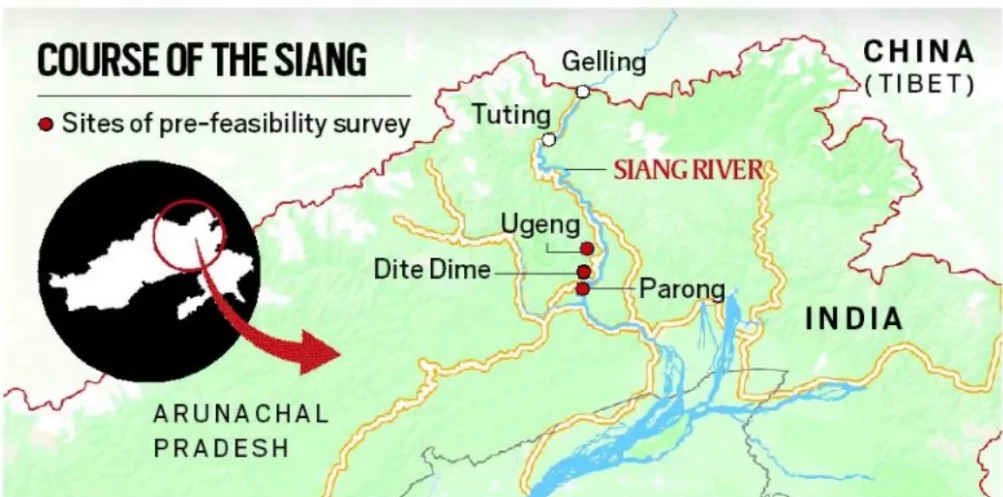On December 8th, the South Asian Association for Regional Cooperation (SAARC) marked 39 years since its establishment.

About BIMSTEC
Should India prioritize BIMSTEC at the expense of SAARC?
|
SAARC’s challenges are deeply rooted in political conflicts, structural inefficiencies, and economic underperformance. Comprehensive reforms, such as flexible decision-making, prioritizing regional trade, and resolving political disputes, are necessary to revive SAARC’s relevance and fulfill its mandate. It shall not only be in moments of crisis that SAARC nations build consensus. A unified approach to achieving peace, stability and growth shall be the compass guiding future SAARC meetings and reaping benefits of the Asian Century.
December 5, 2024, marked the 10th World Soil Day, with the theme “Caring for Soils – Measure, Monitor, and Manage.”
Soil Health and Role of Technology in Soil Health
Role of Technology in Soil Health
|
|---|
Organisations
|
|---|
| Desertification and Land Degradation Atlas of India is published by Space Applications Centre (SAC) Indian Space Research Organisation, Ahmedabad. It provides the extent of land degradation and desertification in India. |
|---|
Fertiliser Industry of India
|
|---|
Initiatives Related to Soil Management
|
|---|
International Best Practices and Learnings For India
|
|---|
The Centre announced the appointment of Revenue Secretary Sanjay Malhotra as the 26th Governor of the Reserve Bank of India as the six-year term of incumbent Governor Shaktikanta Das came to an end.
Opposition parties plan to submit a notice for a no-confidence or impeachment resolution against Vice-President and Rajya Sabha Chairman.

A male markhor strayed into Noorkhah village, Baramulla, near the Kazinag National Park in north Kashmir, close to the Line of Control.
Kazinga National Park
|
|---|
India attracted over a trillion dollars in foreign direct investment between April 2000 and September 2024 as per data of the Department for Promotion of Industry and Internal Trade (DPIIT), Ministry of Commerce and Industry
| Aspect | Foreign Direct Investment (FDI) | Foreign Portfolio Investment (FPI) |
| Definition | Investment in physical assets or ownership in a foreign entity to gain significant control. | Investment in financial assets like stocks, bonds, and other securities without direct control. |
| Investment Nature | Long-term and strategic | Short-term and market-driven |
| Control and Influence | Provides significant control over management and decision-making in the invested company. | No managerial control; purely passive financial investment. |
| Examples | Acquisition of a factory or establishment of a subsidiary. | Buying shares in a foreign company through stock exchanges. |
Investors are urging the Reserve Bank of India (RBI) to permit state government debt to be issued as zero-coupon bonds.
 Attractive for investors seeking fixed returns over a specific period.
Attractive for investors seeking fixed returns over a specific period.
Arunachal government deploys central forces to counter dam protestors in Siang Valley.

Environmental and Social Concerns: Anti-dam organizations express concerns about the project’s environmental and social impact.
Context: Recently the Notre Dame de Paris or the Cathedral of Notre Dame was re-opened after a massive fire destroyed its roof and spire five years ago in 2019.
Context: OpenAI has launched Sora Turbo, a new and faster version of Sora, the company’s text-to-video artificial intelligence (AI) model which it previewed in February.
Context: The Supreme Court (SC) exercised its plenary powers under Article 142 to provide a relief to a woman Army officer and grant her permanent commission.
Article 142 of the Constitution of India gives the Supreme Court of India the power to pass any order it deems necessary to achieve “complete justice” in a pending matter:
Application of Article 142: Union Carbide case, relating to the victims of the Bhopal gas tragedy. Here, the Supreme Court deviated from existing law to bring relief to the thousands of persons affected by the gas leak.
Union Cabinet Approves National Sports Policy 2025...
What are Altermagnets? A Breakthrough in Magnetism...
India’s 7-Point Strategy for Sustainable Gro...
Cabinet Approves Employment Linked Incentive Schem...
INS Udaygiri Delivered Under Project 17A to Indian...
SC Issues Implemented Reservation Roster for SC/ST...
<div class="new-fform">
</div>